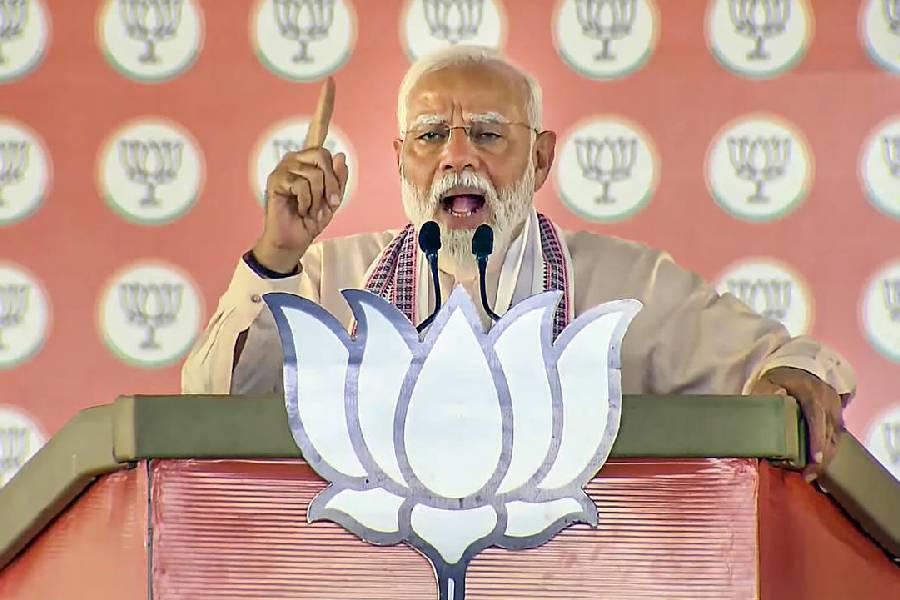The onion crisis last November undermined cosy assumptions about the country?s food security. The real issue is foodgrain. Figures show rising population slowly wiping out recent gains in foodgrain production. Ministry of agriculture figures show that production, having touched 199 million tonnes in 1996-97, dipped to 193 million tonnes in 1997-98. The ministry admits this year?s target of 200 million tonnes will be difficult.
After rising steadily for a decade, foodgrain production has plateaued. It now seems improbable that India will be able to reach the ninth plan target of 234 million tonnes by 2002. This would mean raising production to an average of 11 million tonnes a year for three years. India has had good monsoons for 11 successive years. At some point the normal agricultural calculation of a five year cycle of one good, one bad and three indifferent years will disturb productivity. However, this is only further reason to worry. Even after years of good rains, foodgrain production is still losing momentum.
This puts a question mark over the special action plan of the present Bharatiya Janata Party government. The action plan?s target is ?to double food production in the next decade to meet the consumption requirement of the growing population and to make India hunger free...an exercise done to estimate the food requirement suggests that production of 300 million tonnes of foodgrain should be adequate to meet the total consumption requirement of the estimated population of over a billion by 2007.?
Some more, please
To meet this 300 million tonne target, the government set a ninth plan target of 234 million tonnes. But India?s population grows faster. Even if the ambitious target of 234 million tonnes is met, per capita availability of grain will still come down from 4.85 tonnes per person per year in 1994 to 4.45 in 2002.
The government ignores this danger. It prefers to describe each year?s production as better than last year?s and leave it at that. The draft ninth plan talks of targets and strategies to achieve the growth path. It does not analyze why food shortages are occurring.
The easy way to more food is raising the budgetary allocation for agriculture. But the action plan says to reach ninth year production projections, Rs 190 billion is required. The planning commission has increased outlays to only Rs 170 billion. It should be remembered that actual utilization of such funds is often far less than projected.
Between population growth and less money, a food security hole is starting to open up. Present policies are not providing the sort of agricultural growth needed. However, there is little effort to change ways. As population begins to eat into food reserves, the sort of scarcities and high prices experienced last year may become regular features.
Spare a thought for food
To raise agricultural production, one can either increase the amount of land under cultivation or raise productivity per unit of land. The latter route worked in the form of the green revolution in Haryana and Punjab. But productivity increases are flattening out. Excessive fertilizer use and heavy irrigation are making large tracts of land infertile in both states.
Looking for other means to increase productivity is an option. But the government?s approach is unclear. While the national rainfed areas development programme has received a boost, allocations for irrigation, especially small scale irrigation, often go unspent. The central and south Indian plateaus need highly imaginative water harvesting structures to raise crop productivity. So far progress is restricted to policy announcements. The action plan says Rs 410 billion is needed for irrigation, including drainage, by 2007 to attain the 300 million tonnes target. This figure excludes minor irrigation projects. Given the ninth plan?s financial crunch, this magnitude of expenditure seems unlikely.
Much potential is going to waste. In north Bihar every year, crops worth millions of rupees are washed away by floods. Land reform seems remoter with every year. Its impact on agriculture could be stupendous ? consider per acre farm productivity in Japan.
India is already experiencing a decline in per capita availability of foodgrain. Food scarcity will begin to creep upwards, affecting the poor first. At present, however, it is a prospect neither Krishi Bhavan nor the planning commission are giving much thought to.
 Thursday, 25 April 2024
Thursday, 25 April 2024









